Late to the Party: Sonic Orgins
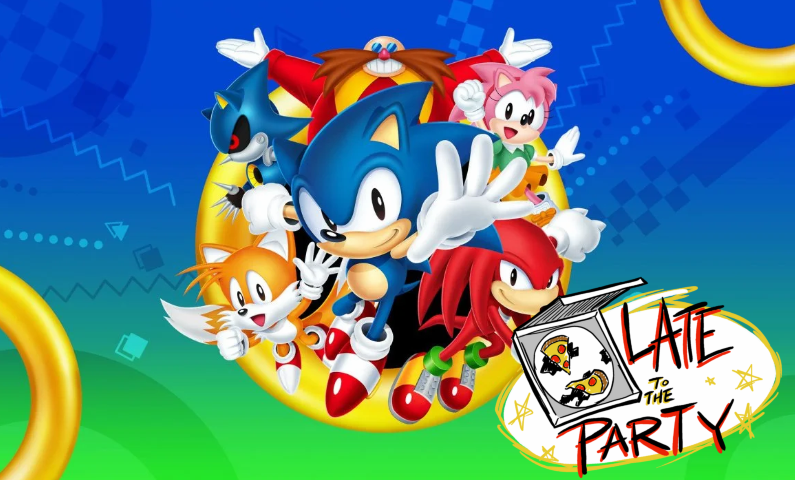
 orgive the clichéd sentiment, but even after 31 years of blazing across all manner of screens, SEGA’s Sonic the Hedgehog does show any sign of slowing down. Riding the hype train of the recent film’s success at the Box-Office in the same year the little guy turns 31, the folks at SEGA and Sonic Team in collaboration with the talented folks at HeadCannon took to the task of releasing yet another Classic Sonic Collection, Sonic Origins. The collection features Sonic the Hedgehog, Sonic the Hedgehog 2, Sonic CD, and the first re-release of Sonic the Hedgehog 3 & Knuckles in over a decade; each one optimized with the same Retro Engine Sonic Mania ran on, enhancing these cult-favorite titles with a sizable HD upgrade for the current generation of gaming.
orgive the clichéd sentiment, but even after 31 years of blazing across all manner of screens, SEGA’s Sonic the Hedgehog does show any sign of slowing down. Riding the hype train of the recent film’s success at the Box-Office in the same year the little guy turns 31, the folks at SEGA and Sonic Team in collaboration with the talented folks at HeadCannon took to the task of releasing yet another Classic Sonic Collection, Sonic Origins. The collection features Sonic the Hedgehog, Sonic the Hedgehog 2, Sonic CD, and the first re-release of Sonic the Hedgehog 3 & Knuckles in over a decade; each one optimized with the same Retro Engine Sonic Mania ran on, enhancing these cult-favorite titles with a sizable HD upgrade for the current generation of gaming.
Despite the number of times some of these titles have been re-released, Sonic Team and company have boasted that this new arrangement will come loaded with more passion and fandom than we’ve seen from the likes of Sonic Jam or Sonic Mega Collection. While some of those claims are founded, I can’t quite help but feel like Sonic Origins struggles to live up to the potential it had, let alone the hype going into the whole thing.
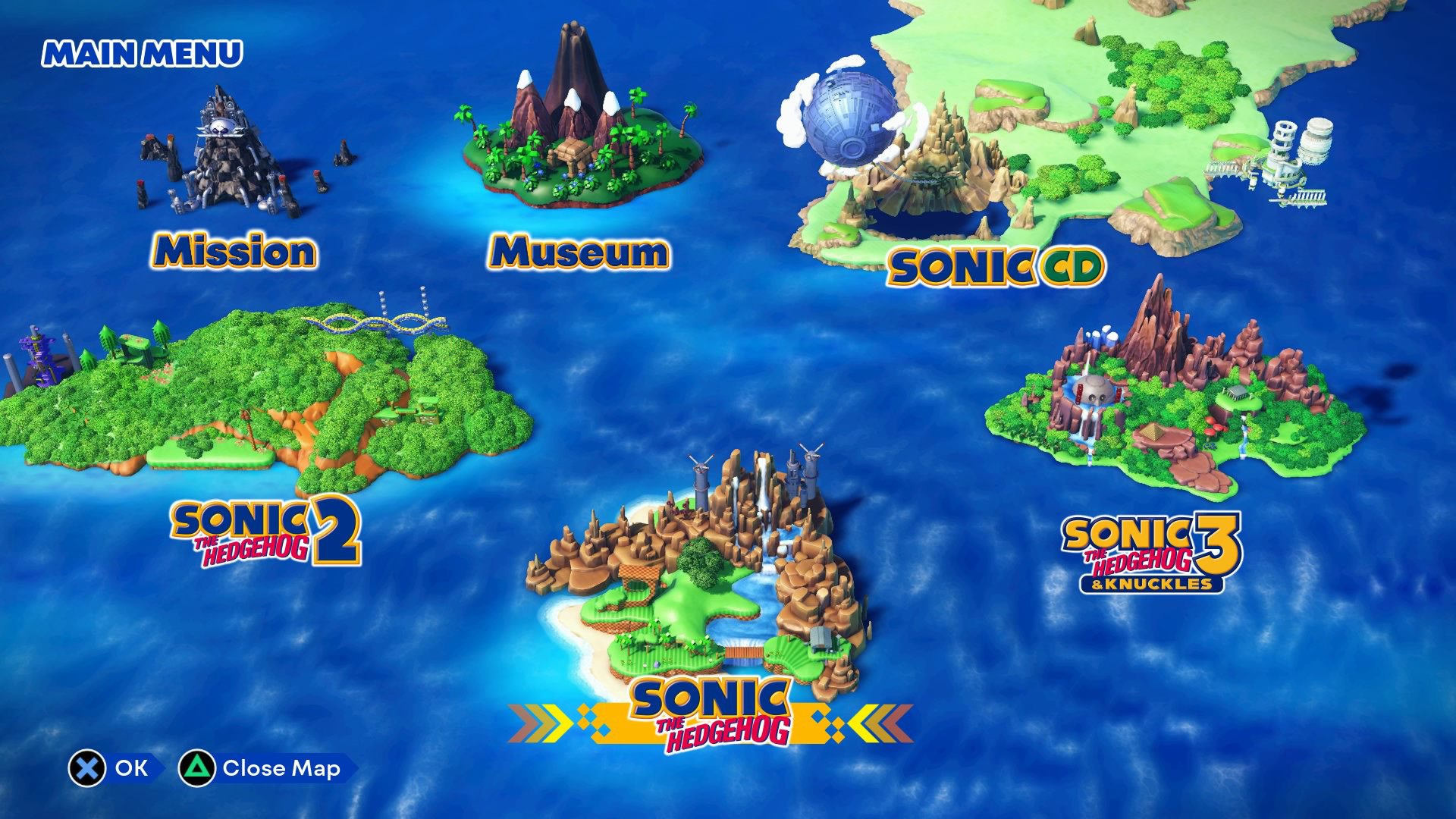
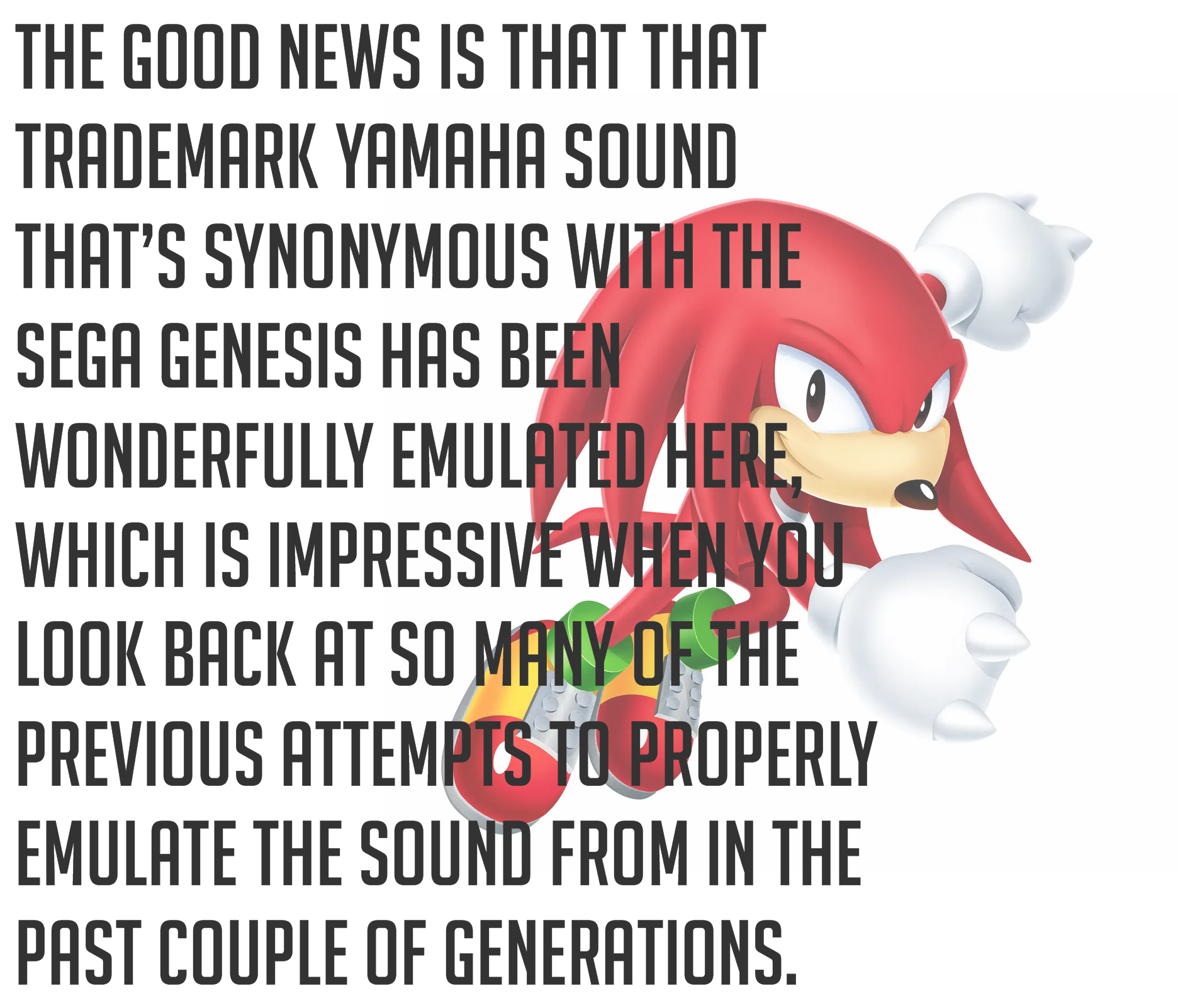 So that’s a weird vibe to kick a feature off into, isn’t it? Well—a lot of that comes from the expectations that are commanded from these mega-hits, and the sort of face-value that the Retro Engine has already accumulated these past couple of generations. After first seeing what Christian Whitehead’s engine could do with the stellar Xbox Live Arcade release of Sonic CD, SEGA then commissioned the developer to use the system for their iOS ports of Sonic the Hedgehog 1 and 2, both of which were met with wide-acclaim for the upgraded visual fidelity and quality-of-life enhancements made to an already solid Gameplay foundation. Whitehead’s engine soon leads to him other Game Development Talents like Simon Thomley, which then to the founding of HeadCannon, and not long after the launch of the wildly successful follow-up to their previous work with SEGA, Sonic Mania.
So that’s a weird vibe to kick a feature off into, isn’t it? Well—a lot of that comes from the expectations that are commanded from these mega-hits, and the sort of face-value that the Retro Engine has already accumulated these past couple of generations. After first seeing what Christian Whitehead’s engine could do with the stellar Xbox Live Arcade release of Sonic CD, SEGA then commissioned the developer to use the system for their iOS ports of Sonic the Hedgehog 1 and 2, both of which were met with wide-acclaim for the upgraded visual fidelity and quality-of-life enhancements made to an already solid Gameplay foundation. Whitehead’s engine soon leads to him other Game Development Talents like Simon Thomley, which then to the founding of HeadCannon, and not long after the launch of the wildly successful follow-up to their previous work with SEGA, Sonic Mania.
It wasn’t long after that SEGA had delisted the Retro Engine-powered Genesis remasters across every Digital Storefront they were sold on, pushing the admittedly more humble SEGA AGES remakes instead. Since then, there has been a clamor for the Retro Engine to make a comeback, and after some considerable time, SEGA finally answered those cries with the announcement of Sonic Origins.
Unfortunately, the long-awaited reunion between the Big S and HeadCannon has fizzled into somewhat of a disappointment in contrast to their previous work as Sonic Origins is plagued by a significant number of issues.
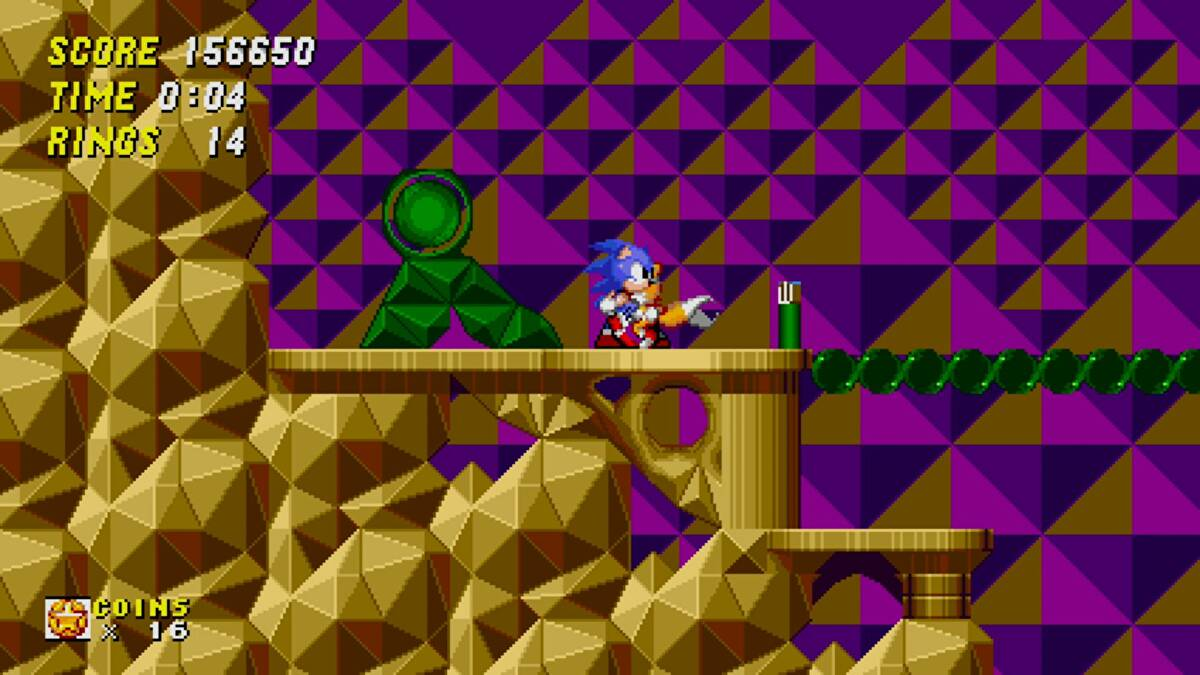 Sonic Origins allows players to finally experience Hidden Palace on a true HD Screen.
Sonic Origins allows players to finally experience Hidden Palace on a true HD Screen.
One of the more glaring issues is the lack of quality control from the Retro Engine itself as all four titles are rife with glitches, which is especially surprising given how immaculately these titles have run with the same system before. A majority of these technical hiccups have to do with the collision-detection Sonic and the Gang has with the trademark nuances of Properties level design like Slopes or ramps and any variation of the two. Momentum can either come to a dead-stop when traveling across curved terrain or the polar opposite, frenetically shooting one of the furry heroes across the stage in any wild direction without rhyme or reason, flaws that are especially irksome for a physics-heavy platformer that’s designed around momentum-mechanics. Others aren’t so much game-breaking as they’re just simply annoying, like Tails constantly jumping over and over again if left behind. You read that right—instead of Helicoptering his way back to the screen to join you, AI just traps your Foxy Sidekick in place with never-ending loops of jumps that will constantly sound off until you can finish the Act you’re in or die.
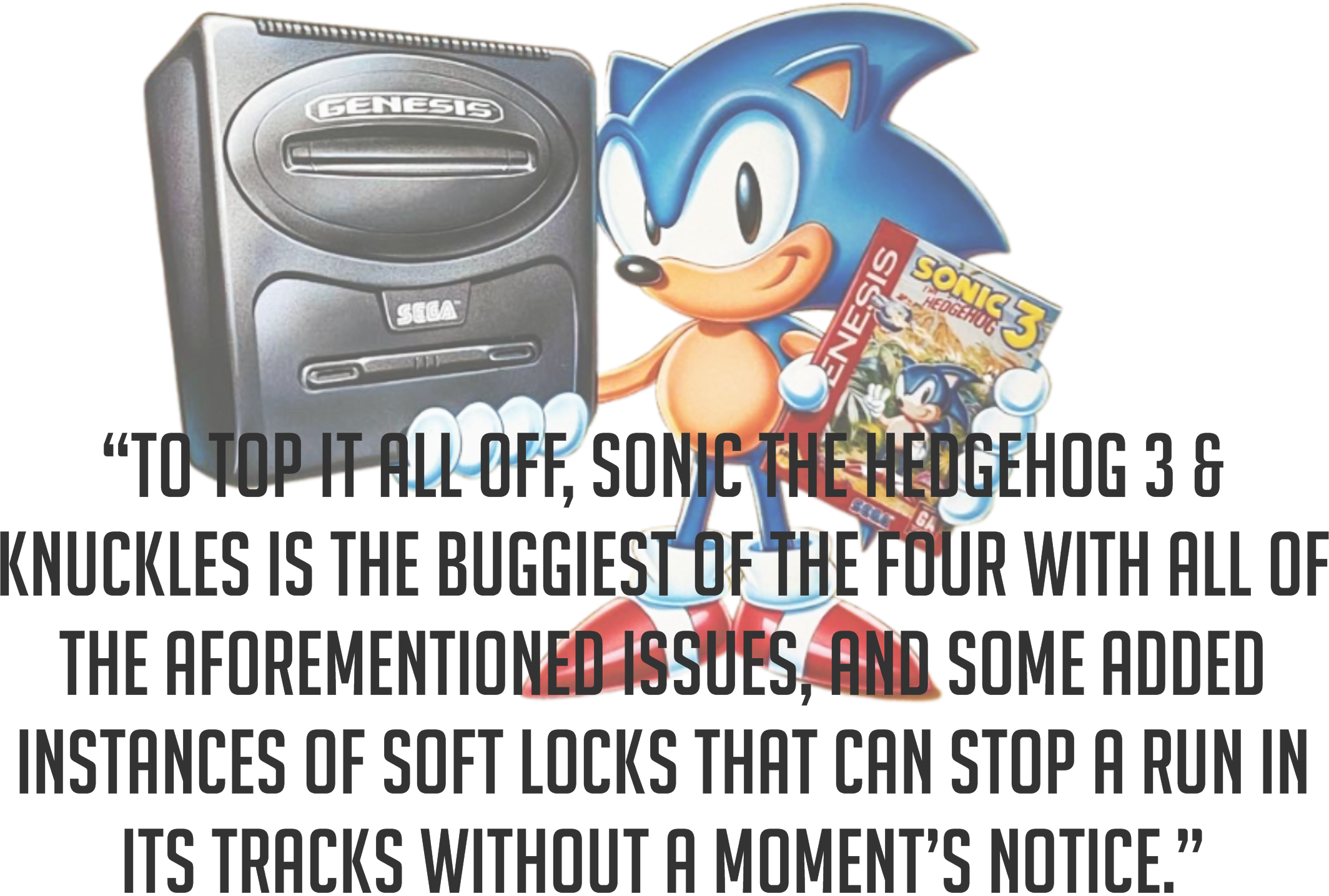
To top it all off, Sonic the Hedgehog 3 & Knuckles is the buggiest of the four with all of the aforementioned issues, and some added instances of soft locks that can stop a run in its tracks without a moment’s notice. Despite these issues, the games are very much still playable, and while Origins certainly lacks the polish of the previous Sonic Collections, it more than makes up for it with the upgrades it makes to the presentation and various gameplay elements.
The first big feature of note is the Anniversary Mode, which touches the titles up with a slew of Quality-of-Life improvements for many of the fundamentals of Gameplay. A lot of these aren’t brand new additions for those who’re familiar with the previous Retro Engine-powered ports, some of these improvements have been tweaked to perfection, like various Stage Elements of the original Sonic the Hedgehog have been slightly modified to complement the speed of the Spin-Dash, a maneuver that wasn’t in the 16-Bit incarnation. Other improvements are much more nuanced, like Carnival Night Zone in Sonic the Hedgehog 3 & Knuckles for instance prevents the second player from bursting the Balloon Platforms before Sonic can get to them, making the traversal for the higher-routes of the stage far more palatable than they used to be. Another example in that same stage is the Spinning Column platforms, which poorly telegraphed the ability to maneuver them Up or Down, living on infamy as a cryptic puzzle that tormented swathes of Genesis owners for over a decade before Online Walkthroughs came along.
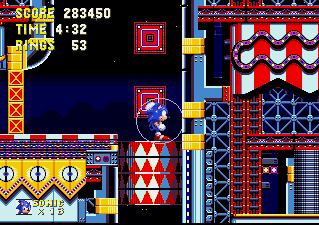 The Dreaded Pillar Puzzle from Carnival Night Zone Act 2Beyond all of the visual flourishes though, the sound design hasn’t improved nearly as much. The good news is that that trademark Yamaha sound that’s synonymous with the SEGA Genesis has been wonderfully emulated here, which is impressive when you look back at so many of the previous attempts to properly emulate the sound from in the past couple of generations. The familiar crunchy effects and melodies of fan-favorite tracks like Star Light Zone or Aquatic Ruins Zone are here, albeit, without any of the bells and whistles that Dolby Surround could have lent to the score.
The Dreaded Pillar Puzzle from Carnival Night Zone Act 2Beyond all of the visual flourishes though, the sound design hasn’t improved nearly as much. The good news is that that trademark Yamaha sound that’s synonymous with the SEGA Genesis has been wonderfully emulated here, which is impressive when you look back at so many of the previous attempts to properly emulate the sound from in the past couple of generations. The familiar crunchy effects and melodies of fan-favorite tracks like Star Light Zone or Aquatic Ruins Zone are here, albeit, without any of the bells and whistles that Dolby Surround could have lent to the score.
I guess this is the part where I address the ugly white marsupial in the zone, and talk about the changes made to Sonic the Hedgehog 3’s Soundtrack—which, to be honest, was expected for those familiar with the arrangement. What was once a decade’s past rumor has all since been confirmed by previous Sonic producer, Yuji Naka, that a lot of its composition was worked on by the late Pop Music Icon, Michael Jackson. With all of the licensing that would have been involved with the current regulation-heavy climate of media consumption, the developers opted to implement the Prototype tracks from the title’s cutting room floor, but not the way we would have all hoped. The specific version of the tracks used were the MIDI versions that were done for the PC Port of the game in the mid-nineties when SEGA was branching a lot of its software into the Windows PC market during its formative years. What’s more is that the jarring dissonance that happens whenever the game transitions between the Genesis and the MIDI sound tech isn’t even the worst part about this design choice; let me be frank here when I say that the MIDI format of these tracks just plain suck, like, they’re really bad.
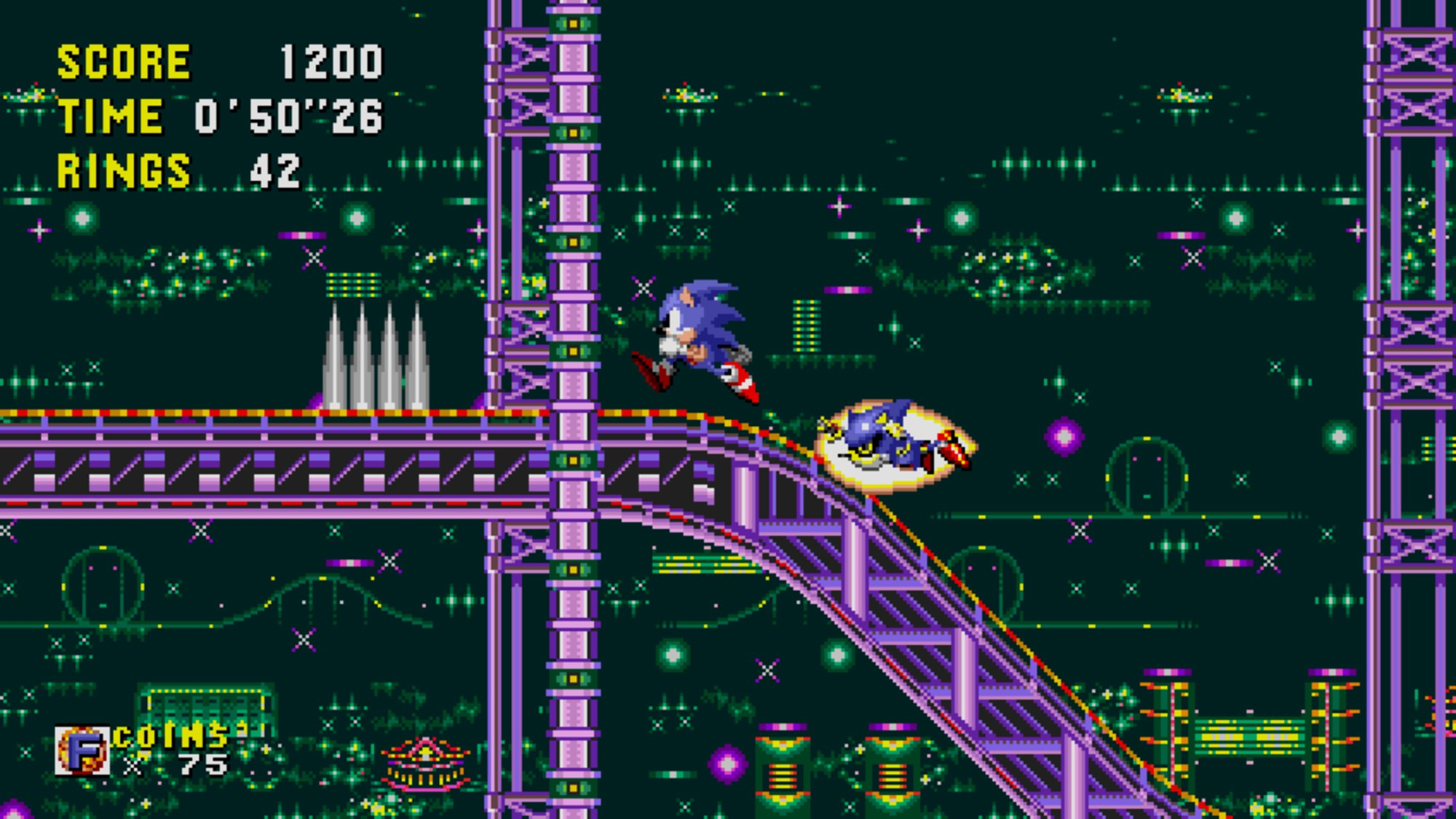 Contrast to the Genesis originals withstanding, the compositional quality of the PC MIDI music is dreadfully dubious in its own right, with notes that swell beyond any sort of rhythmic peak and valley to enjoy, and sudden stops between the various MIDI instruments responsible for their respective beats just disrupt any chance for the music to have any real harmony. The original arrangements are even worse, with seemingly no synergy with the ambiance and tone of the level environments, especially Launch Base Zone—that track sounds like they couldn’t be bothered with another take unless their lives depended on it.
Contrast to the Genesis originals withstanding, the compositional quality of the PC MIDI music is dreadfully dubious in its own right, with notes that swell beyond any sort of rhythmic peak and valley to enjoy, and sudden stops between the various MIDI instruments responsible for their respective beats just disrupt any chance for the music to have any real harmony. The original arrangements are even worse, with seemingly no synergy with the ambiance and tone of the level environments, especially Launch Base Zone—that track sounds like they couldn’t be bothered with another take unless their lives depended on it.
It’s simply bananas that these niche, inferior tracks were the ones that were greenlit for this high-profile compilation, especially when you think about the idea of Tee-Lopes rearranging it himself, and all of the funky greatness he could have given us with the Jackson replacement tracks.
The only other big gripe that I have with this title is the glaring omission it made with a key game that still hasn’t seen a proper re-release since the ill-fated Gametap in 2005: Knuckles’ Chaotix—the other “other” mainline Sonic game from the prime of the Genesis.
It’s no secret I share unabashed nostalgia for the often dubbed “red-headed step-child” of a game (there’s my one and only pun) but the flagship platformer of the SEGA 32X has so much to offer than popular opinion has granted it. Many of the ideas that made it into Sonic Mania, and Its “Plus” Expansion came directly out of Chaotix. The Blue Ring Power-up that consolidates all of your rings into one single ring to re-collect should you get bopped by a Badnik, or the Character Boxes that you can break to exchange your current furry hero for another in “Encore Mode” were all concepts that were previously done by the Echidna in his 1995 sleeper of a quest.
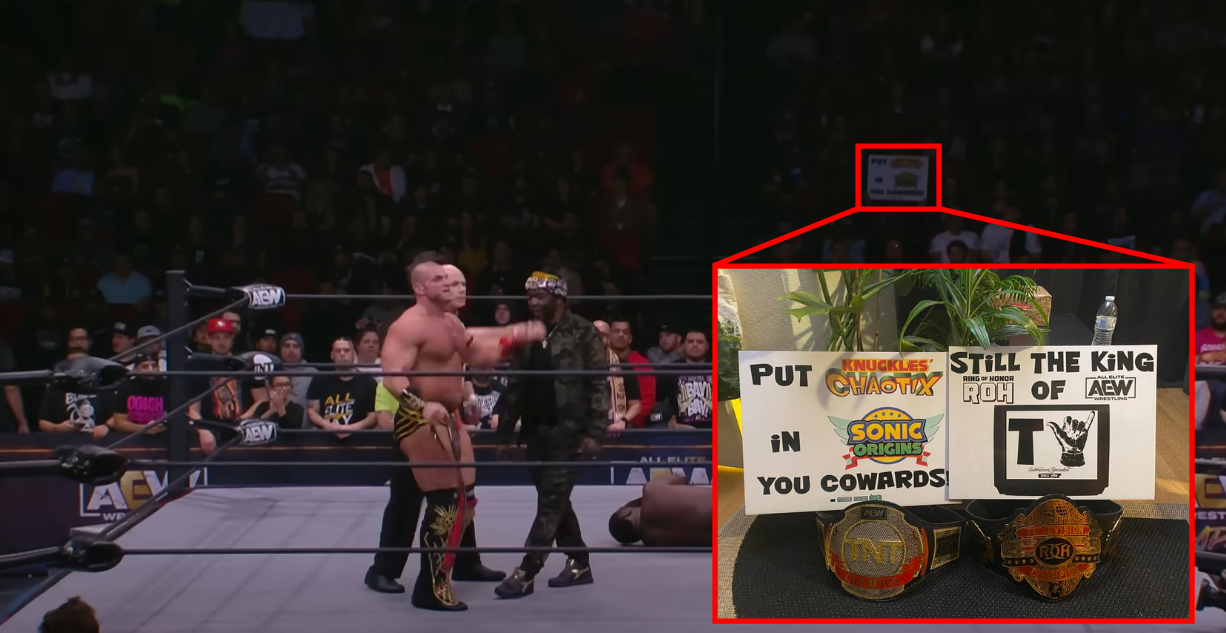 If you have a Video Game-related wish, don't toss a penny in a fountain—put it on a sign and take it to a Pro-Wrestling Show in hopes that you can meme it true.
If you have a Video Game-related wish, don't toss a penny in a fountain—put it on a sign and take it to a Pro-Wrestling Show in hopes that you can meme it true.
The much-maligned “Rubber-Band” mechanic was actually ahead of its time for what it did for the admittedly familiar Sonic Gameplay loop, adding all new layers of physics that significantly expanded the frenetic sense of movement these titles were famous for, giving course runs a whole new twist the series had never seen before. Before Sonic Team mucked up the simplicity of the Hedgehog trinity with a bloated cast of critters, the Chaotix Devs were able to hit the “Goldilocks” number with five playable characters who each complemented the Rubber-band dynamic with their own set of unique skills that all gelled well in the game’s giant sprawling levels.
I could go on, but really, it’s more than a shame, or even a missed opportunity to omit this cult-favorite from the Origins lineup—it’s a downright TRAVESTY that Knuckles Chaotix was not included in Sonic Origins and it absolutely hurts the overall stock this collection has going for it as the definitive compilation of the Mascot’s Genesis outings.
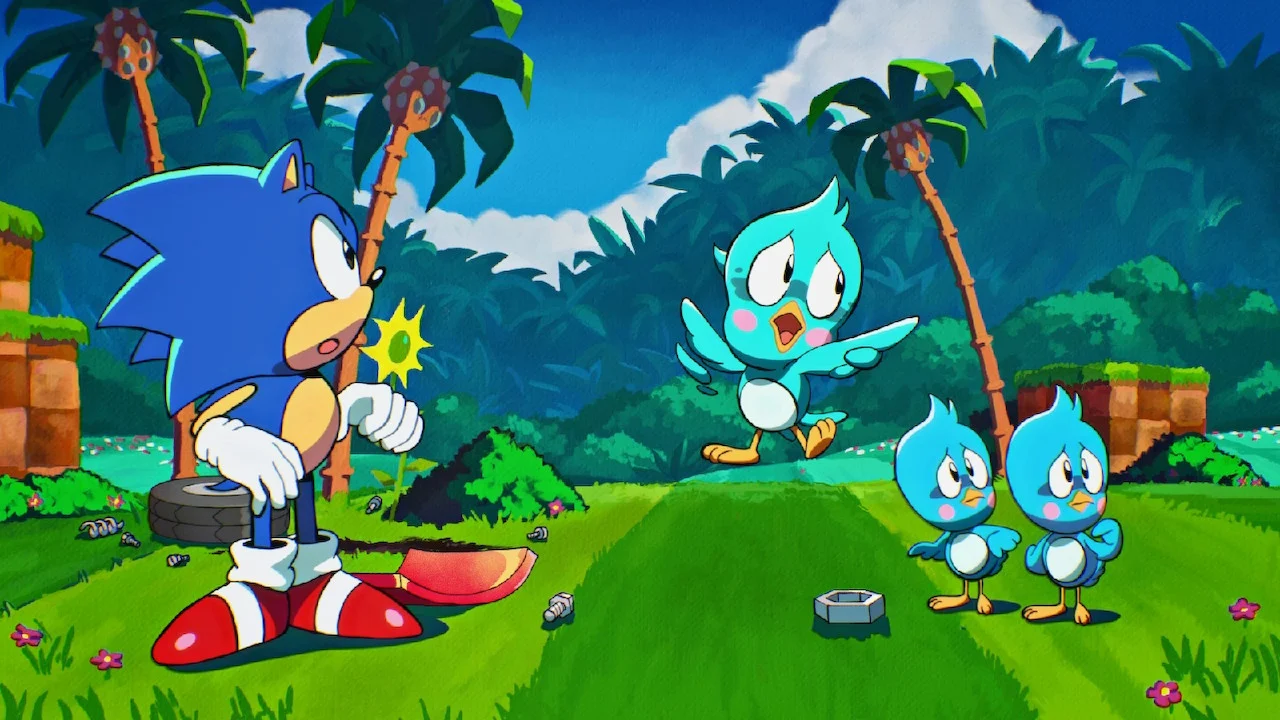
While the technical shortcomings and shortsighted decisions do hamper this release a bit, I can’t help but still appreciate the other touches that go the extra mile to appear to the passionate fandom that exists for the blue blur and his 16-bit roots. If you have any sort of passing fancy for these games then I highly suggest you grab this title, especially when the alternative options are steadily becoming less accessible in the grand scheme of aging electronics and their varying shelf life. Just be sure to adjust your expectations accordingly because as much your childhood self wants to believe it, Sonic Origins isn’t the second coming of Sonic Jesus that SEGA marketed it to be.





 GeorgieBoysAXE
GeorgieBoysAXE




